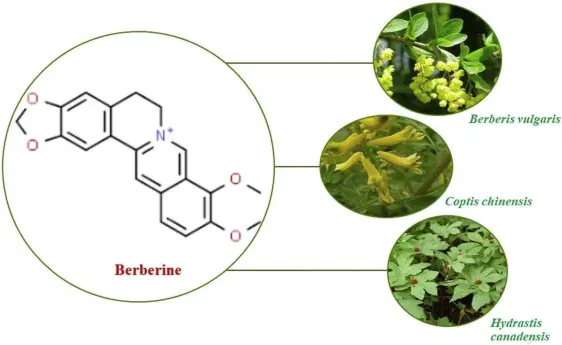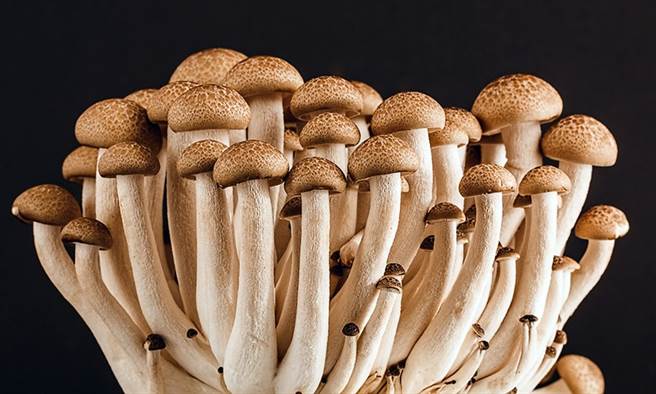0102030405
Another Natural Anti-Aging Molecule: Oleuropein’s Market Value to Reach $1.42 Billion!
2025-01-03
A new study published in Cell Metabolism on November 26,2024,reveals the significant health potential of oleuropein,a natural polyphenol derived from olive leaves. The research highlights its ability to stimulate mitochondrial bioenergetics and enhance muscle performance,marking it as a promising anti-aging compound. The growing interest in oleuropein aligns with its rising market value,projected to reach $1.42 billion by 2031.
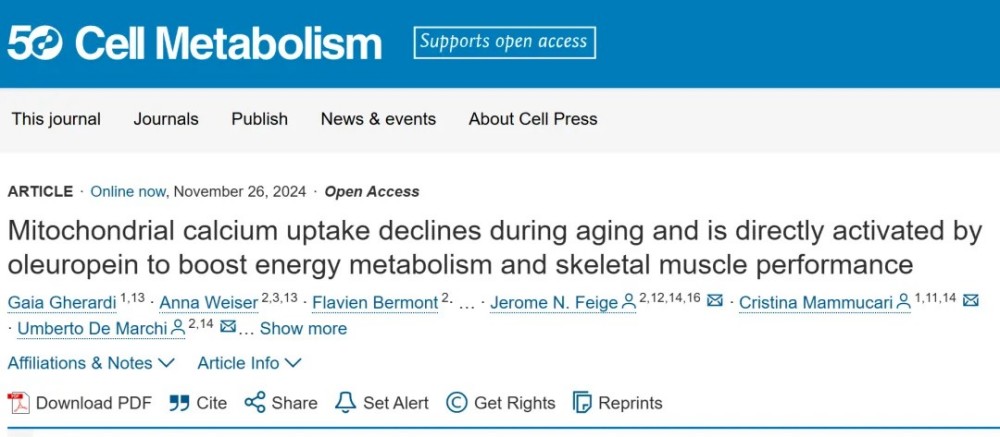
Source: Cell Metabolism
Promoting Mitochondrial Health to Combat Muscle Aging
Mitochondria,the energy powerhouses of cells,play a critical role in maintaining muscle function and combating age-related decline. Dysfunction in mitochondrial metabolism is closely linked to sarcopenia,characterized by reduced muscle mass,strength,and mobility.
Regulation of mitochondrial calcium (mtCa2+) has a direct effect on oxidative metabolism and is involved in regulating skeletal muscle function. The uptake of calcium in mitochondria is controlled by the mitochondrial calcium uniporter (MCU). MCU is a multi-protein complex consisting of MCU channels that transport Ca2+ on the inner mitochondrial membrane and regulators that regulate MCU activity to adapt to cellular metabolic needs. base composition.
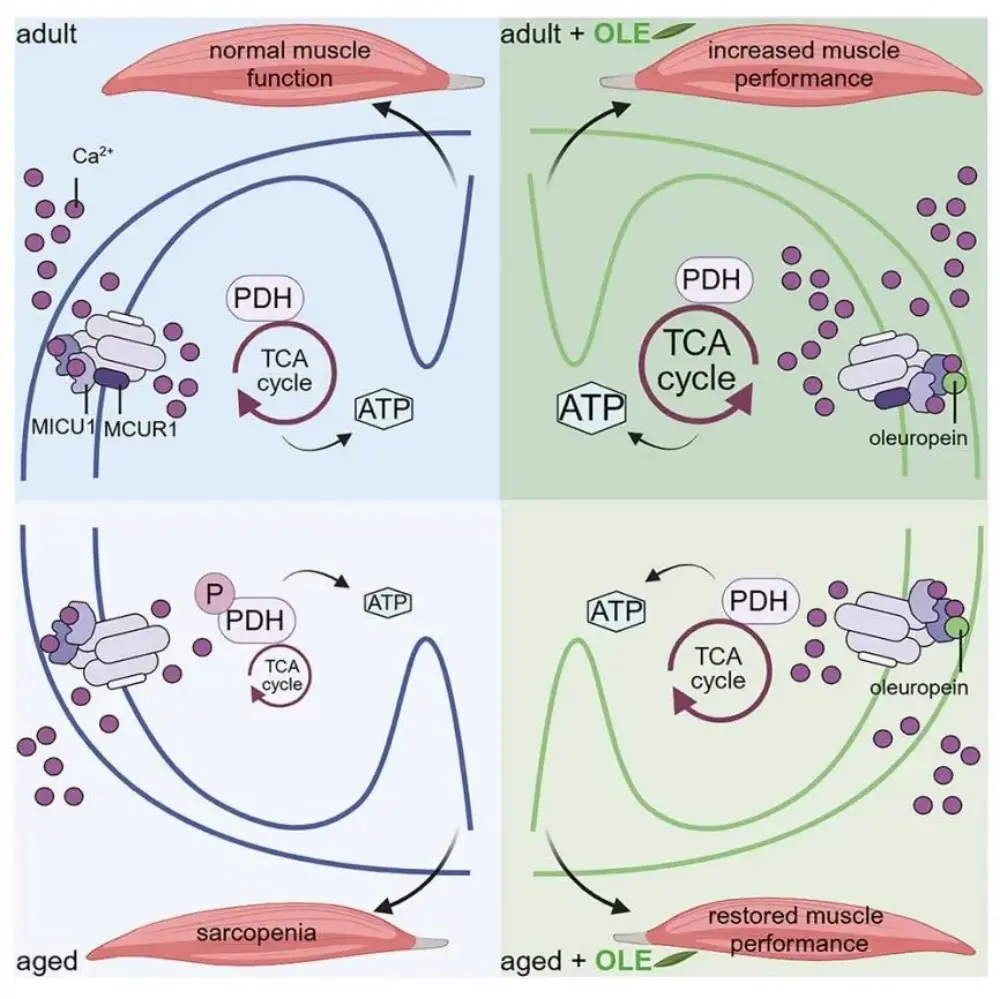
Studies have found that by down-regulating mitochondrial calcium unitransporter regulatory factor 1 (MCUR1),the uptake capacity of mtCa2+ in model organisms and humans decreases during aging. Cellular and in vivo gene rescue experiments show that the reduction of MCUR1 directly leads to the impairment of mitochondrial energy metabolism.
In order to identify novel nutritional solutions that can stimulate mitochondrial bioenergetics and reverse age-related decline,the research team further used high-throughput (HT) to screen natural molecules that activate mtCa2+ and found that oleuropein and its deglycosylated metabolites are closely related to The MICU1 regulatory subunit of MCU binds to stimulate mitochondrial Ca2+ uptake,thereby transiently increasing mtCa2+ concentration at physiological levels and activating the dephosphorylation of PDH through the Ca2+-dependent phosphatase PDP.
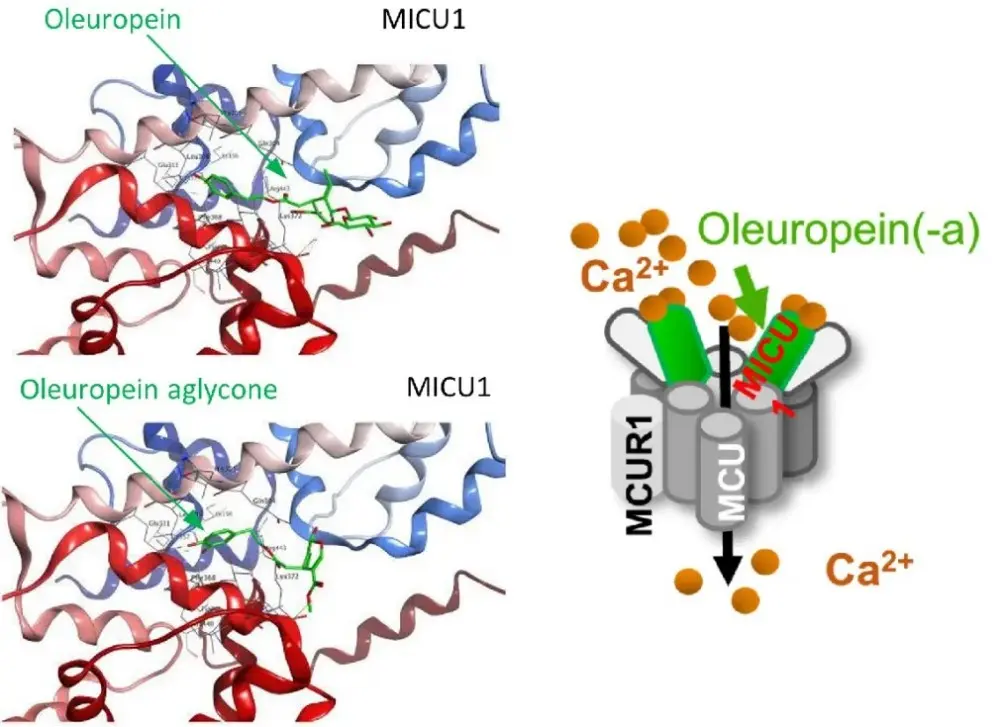
Figure: Oleuropein mechanism of action
Oleuropein: The Star Compound of Olive Leaves
Oleuropein is a phenolic compound found abundantly in olive leaves,unripe olives,and other parts of the olive tree (Olea europaea). First discovered in 1908,oleuropein is responsible for the bitter taste of unprocessed olives. Its concentration is particularly high in young olive fruits and leaves,with levels reaching 140 mg/g and 60–90 mg/g of dry weight,respectively.
Historically,olive leaves have been used in Mediterranean regions for their medicinal properties,treating conditions like fever and malaria. Modern research confirms that oleuropein is the primary bioactive compound in olive leaves,offering a wide range of health benefits.
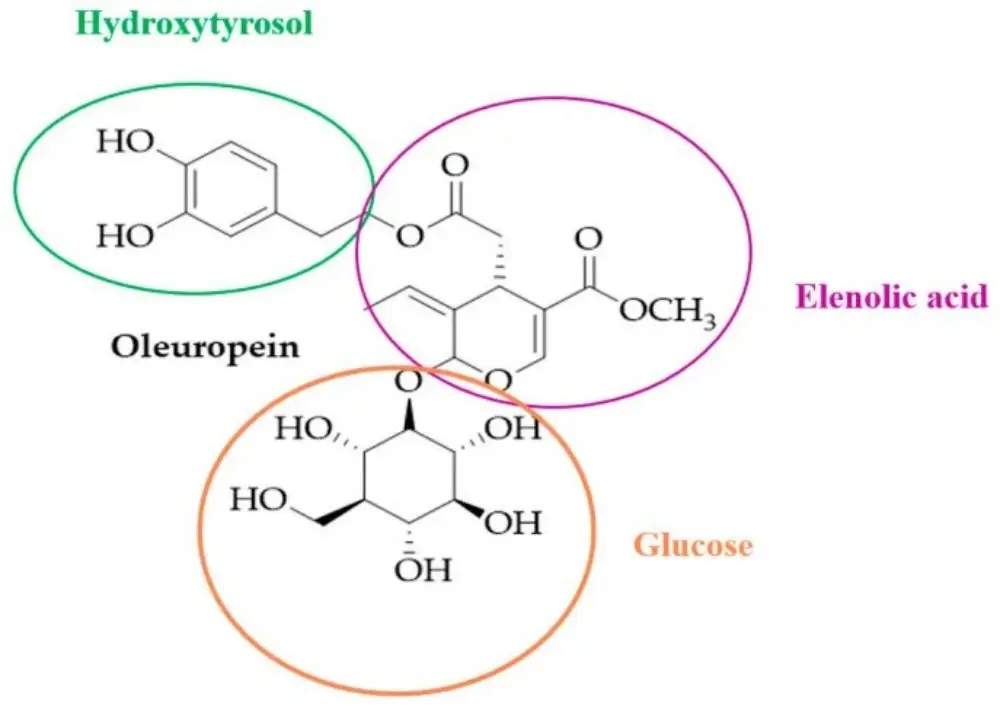
Figure: The structure of oleuropein
Health Benefits of Oleuropein
1.Antioxidant Power
Oleuropein effectively neutralizes reactive oxygen species (ROS) through its dihydroxyphenol groups,providing robust antioxidant protection. It has been shown to outperform ascorbic acid and alpha-tocopherol in some studies. Additionally,oleuropein reduces hypochlorous acid,a strong oxidant linked to protein damage during inflammation,further protecting cellular integrity.
2.Anti-Inflammatory Effects
Oleuropein regulates inflammatory markers,reducing levels of CRP,IL-6,ICAM-1,and VCAM-1. Studies also show it inhibits key pathways involved in inflammation,such as leukotriene B4 production and lipoxygenase activity,making it effective against chronic inflammatory conditions like atherosclerosis,diabetes,and neurodegenerative diseases.
3.Neuroprotection
Oleuropein’s neuroprotective properties are evident in studies on Parkinson’s and Alzheimer’s diseases. It prevents the aggregation of amyloid-beta and tau proteins,key factors in Alzheimer’s pathology,while enhancing antioxidant enzyme activity in the brain. In aged animal models,oleuropein reduced neuronal loss and improved brain health,offering hope for cognitive longevity.
4.Anti-Aging Potential
By enhancing proteasome activity,oleuropein delays replicative senescence in human fibroblasts. It reduces intracellular ROS,maintains protein integrity,and extends cellular lifespan by approximately 15%. This makes it a valuable compound in combating cellular aging.
Market Potential
Olive leaf extract,a byproduct of olive processing,offers untapped economic potential. Over one million tons of olive leaf waste is generated annually,presenting an opportunity for sustainable utilization. Market data shows the global oleuropein market reached $860 million in 2023 and is projected to grow at a compound annual growth rate (CAGR) of 7.2%,reaching $1.42 billion by 2031.
Oleuropein is already gaining traction in the dietary supplement and cosmetic industries.
Conclusion
Oleuropein stands out as a multi-functional compound with applications in anti-aging,muscle health,neuroprotection,and chronic disease management. Its ability to enhance mitochondrial function and combat oxidative stress positions it as a valuable addition to health and wellness products. As research advances and the market grows,oleuropein is poised to play a significant role in the future of natural health solutions.

